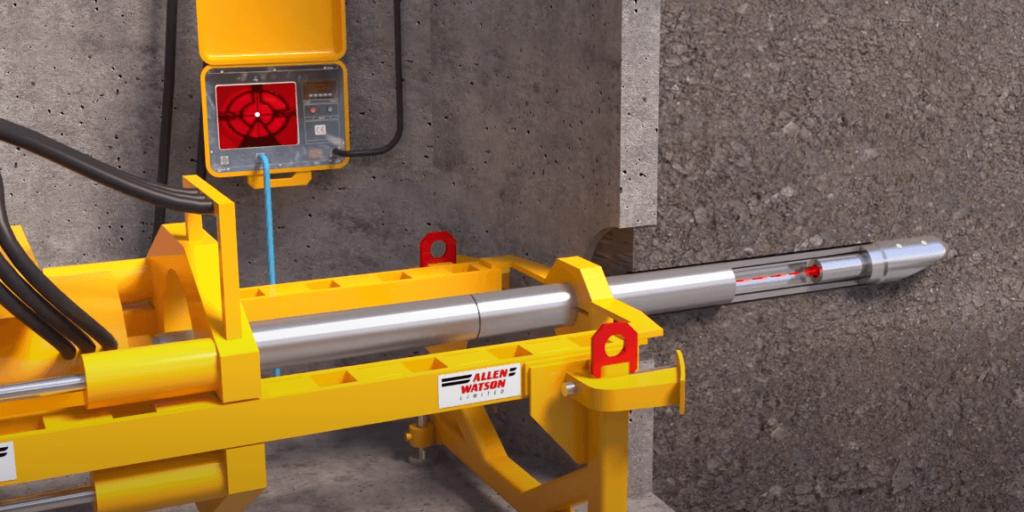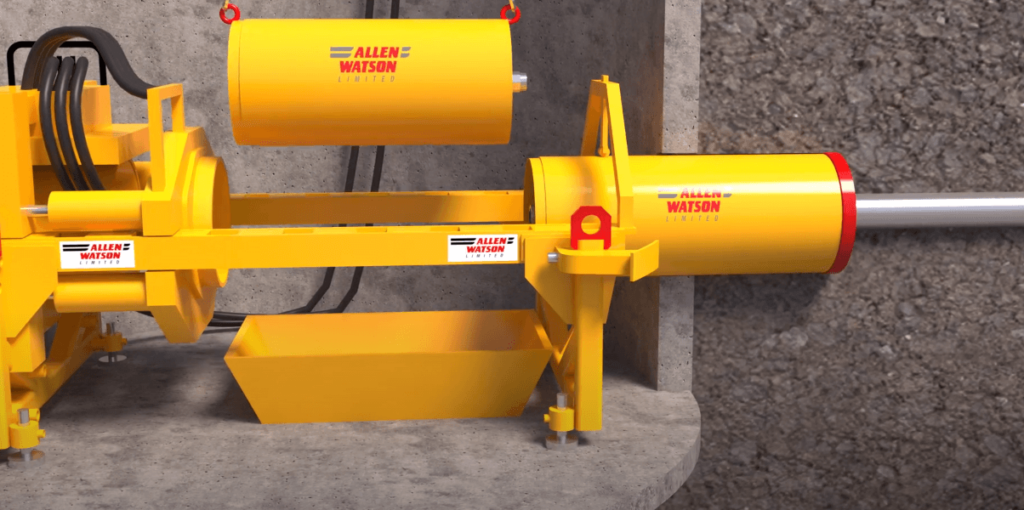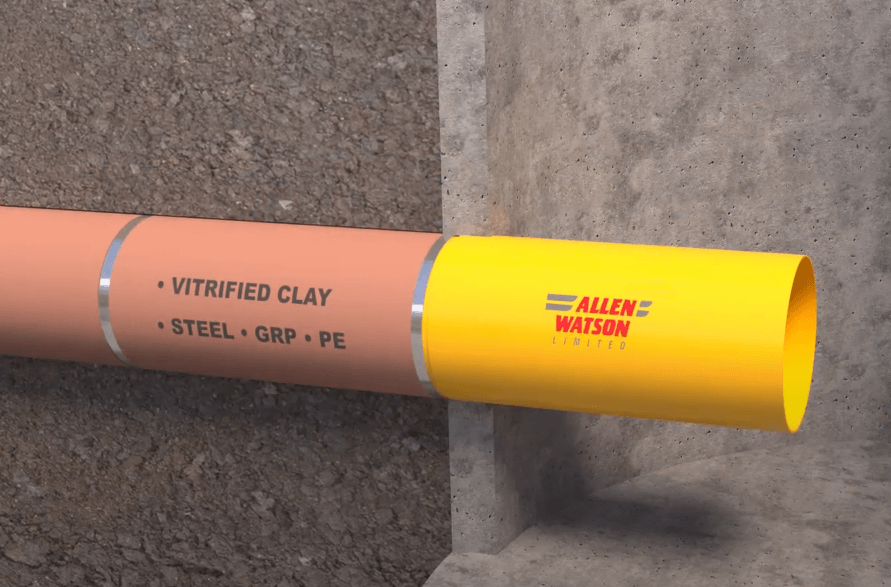What Does
Thrust Boring Mean?
Thrust boring is jacked and drilling trenchless boring method used for the installation of pipes and conduits. This technique is used in applications where excavations are undesirable, such as in developed locations or areas with a high risk of ground collapse.
One of the defining features of thrust boring is its dual action of jacking and drilling. An auger with a cutting head is placed inside a steel casing and laid against the wall of an entry pit. The cutting head rotates, drilling the soil and removing the spoils, while a jacking rig pushes or ‘thrusts’ the casing and auger to the exit pit.
After the auger and steel casing have reached the exit pit, the product pipe is installed within the completed bore. Where grade pipe is installed, spacers may be used to help maintain a constant grade level. Cementitious grouting may be used to fill the space between the pipe and the bore to ensure that the product pipe maintains stability.
Thrust boring may be guided or unguided. Guided thrust boring utilizes a laser-enabled system that increases the accuracy of the installation. A camera-mounted pilot drill provides a live feed to the drilling operator, allowing them to make hydraulic steering corrections to ensure that the bore path remains on course.
This method is also known as rod pushing.
Trenchlesspedia Explains Thrust Boring
Like other trenchless installation methods, thrust boring is ideal for developed areas, protected areas, and other crossings where excavations are either undesirable or unfeasible. The thrust boring process is conducted in a series of steps:
Step 1: Dig the Entry and Exit Pits
Each thrust boring operation begins with digging relatively small entry and exit pits. These rectangular excavations, which are made on each side of the work area (typically at the start and endpoints of the installation area), accommodate the thrust boring machine, work personnel, and installation material. The thrust boring machine is lowered into the entry pit, and the equipment is set up for the boring process.

Figure 1: Thrust boring rig inserted into entry pit (source)
Step 2: Create the Pilot Bore
In guided thrust boring, a pilot hole is made using a relatively small pilot drill. The purpose of the pilot hole is to outline the intended path of the final pipe product. A laser mechanism guides the pilot drill from the entry to the exit pit. If the pilot drill goes off course at any point, the operator uses the camera mounted on the drill to help make minor adjustments to align the bore path with the laser.

Figure 2: The pilot boring process (source)
Step 3: Commence Thrust Boring
After the pilot hole is made, the steel casing with the auger and cutting head are placed in the entry pit. The auger is attached to the rotation shaft of the thrust boring machine and brought to the face of the excavation. The thrust boring machine jacks the casing, while the cutting head and auger rotate simultaneously. The rotational action of the auger utilizes Archimedes screw principle to transfer the cutting out of the bore back to the entry pit for removal.
When the first section of the auger and casing have been advanced to a certain distance in the soil, another casing-auger segment is inserted, and the jacking/drilling process recommences.

Figure 3: Auger and casing jacked into soil (source)
Step 4: Install the Product Pipe
When the final section of the casing reaches the exit pit, the cutting assembly is removed and detached from the thrust boring machine. Sections of the product pipe are then inserted into the entry pit, where they are jacked segment by segment until the pipe installation is complete.

Figure 4: Segments of product pipe installed after the thrust boring process (source)